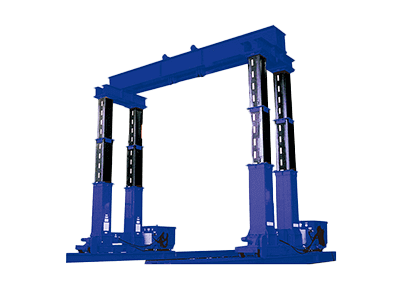What Is an Insect Repellent Light?
An insect-repellent light is an illuminating device designed to deter insects from approaching.
By utilizing special designs and materials to prevent insects from flying towards or making contact with the light source, insect-repellent lights find utility in various indoor and outdoor locations based on specific needs. They contribute to preventing damage to crops caused by insects, preventing insect intrusion in manufacturing facilities, and controlling the spread of infectious diseases carried by insects.
Environmentally friendly compared to chemical methods, insect-repellent lights offer an eco-conscious approach to insect control in agriculture and gardens. If equipped with LED technology, these lights exhibit high energy efficiency and long lifespans, leading to reduced power consumption. The use of insect-repellent lights helps prevent the entry of insects into areas susceptible to their impact. Particularly on summer nights, when insects tend to gather around lights, the need for insect repellent becomes especially significant.
However, while these lights do not emit the ultraviolet light preferred by insects, some insects may still respond to other wavelengths. Therefore, it is important to note that not all types of insects are repelled 100%.
Uses of Insect Repellent Light
Insect-repellent lights serve various purposes, helping to keep insects away in different scenarios. Here are common applications of insect-repellent lights:
1. Agriculture
In agriculture and gardens, insect-repellent lights are employed for insect control. Placed around crops and plants, these lights minimize damage caused by pests, potentially increasing crop yields. Some agricultural insect repellent lights are designed to deceive nocturnal pests by making them think it is daytime, preventing intrusion and breeding during nighttime.
2. Manufacturing
In manufacturing, preventing or minimizing insect intrusion into factory environments is crucial. Insect-repellent measures, especially in outdoor areas like truck yards with large openings, are vital to prevent insects from entering indoor spaces. These lights are often installed in sections such as large openings in industrial facilities and entry points where people enter and exit, as well as in pre-work areas.
3. Outdoor Recreation
In outdoor areas like gardens and balconies, insects tend to gather during the night. Using insect-repellent lights in these locations minimizes insect interference, providing a comfortable environment for outdoor activities.
4. Outdoor Camping
In cases where insect-repellent lights are needed during the night, lantern-style lights can be installed inside tents. This reduces mosquito bites, allowing for a comfortable sleep inside the tent.
5. Outdoor Events
Outdoor events such as concerts and outdoor movies, where large crowds gather, can attract insects. Insect-repellent lights help alleviate the discomfort caused by insects for event participants.
Principle of Insect Repellent Light
1. General Insect Repellent Light
The principle of insect-repellent lights is based on utilizing the light sensitivity of insects and the characteristics of light sources to discourage insects from approaching. Many insects are believed to see light in the ultraviolet range (250nm to 380nm) and are attracted to natural light and sunlight containing ultraviolet light (UV light). Insect-repellent lights work by preventing insects from being attracted through the strategic omission of ultraviolet light.
Commonly, LED lamps are used as light sources in insect-repellent lights. These light sources are designed to not emit light in the ultraviolet range, which is visible to insects, effectively avoiding attraction. Additionally, these lights are often designed to be dustproof and waterproof, making them suitable for outdoor use. This allows them to be used in areas like garage entrances and large openings in factories, providing sufficient illumination while repelling insects.
2. Agricultural Insect Repellent Light
Some agricultural insect repellent lights are designed to illuminate at night, misleading nocturnal pests into thinking it is daytime, thus suppressing intrusion and breeding. Lights with yellow-green (peak wavelength around 578nm) or green (peak wavelength around 535nm) light have an “attracting during the day” effect (positive response) on these pests, preventing intrusion and reducing larval occurrence. However, caution is needed as such light can cause crop damage in certain plants, including grasses, spinach, and some flowers.
How to Choose Insect Repellent Light
When choosing an insect-repellent light, several crucial factors need consideration. Here are examples of key elements to consider when selecting an insect-repellent light. Additionally, specifications may vary based on the intended use, so it’s important to confirm the application for which the product is designed.
1. Rated Voltage
The rated voltage of the insect-repellent light is a critical factor in narrowing down choices (e.g., 100V/200V, single-phase, etc.). It is essential to ensure that the rated voltage of the insect-repellent light matches the voltage of the power source at the chosen location. Mismatched voltages may result in the insect-repellent light not functioning correctly or causing potential malfunctions.
2. Waterproof Rating
For outdoor use, the waterproof performance of the insect-repellent light is crucial. The waterproof rating is expressed through the Ingress Protection Code (IP code) and is displayed in the format IPXX. For example, an IP65-rated insect-repellent light is dustproof and can withstand water jets, making it suitable for outdoor environments with humidity and rain.
3. Luminous Flux
The luminous flux of the insect-repellent light indicates the brightness of the emitted light. Luminous flux is measured in lumens, and an insect-repellent light with a higher lumen count provides brighter light. Consider the required luminous flux based on the environment in which the light will be used.
4. Color Temperature
The color temperature of the insect-repellent light indicates the color tone of the emitted light. Color temperatures can range from warm yellow light to cool blue-white light. Choose the preferred color temperature based on the purpose and environment of use.
5. Energy Efficiency
The energy efficiency of insect-repellent light is the ratio of luminous flux to power consumption. Choosing an energy-efficient insect-repellent light helps save on electricity costs.
